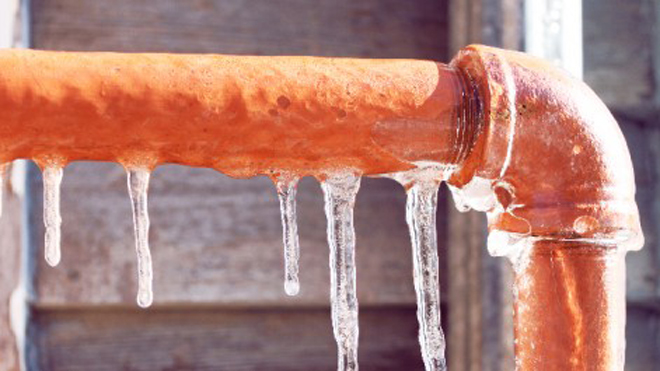The content down below relating to Winter Plumbing Precautions: Preventing Frozen Pipes is quite intriguing. Don't miss out on it.

Winter can wreak havoc on your pipes, especially by freezing pipes. Here's how to avoid it from happening and what to do if it does.
Intro
As temperature levels decline, the danger of frozen pipelines increases, possibly bring about expensive repairs and water damage. Understanding just how to avoid icy pipelines is vital for property owners in chilly environments.
Prevention Tips
Shielding susceptible pipes
Cover pipelines in insulation sleeves or use warmth tape to safeguard them from freezing temperatures. Concentrate on pipes in unheated or external areas of the home.
Home heating techniques
Maintain interior areas adequately heated, specifically areas with pipes. Open up closet doors to enable cozy air to distribute around pipelines under sinks.
Exactly how to recognize frozen pipes
Seek decreased water circulation from taps, unusual odors or sounds from pipelines, and visible frost on exposed pipelines.
Long-Term Solutions
Architectural modifications
Think about rerouting pipelines away from exterior walls or unheated areas. Include extra insulation to attic rooms, basements, and crawl spaces.
Upgrading insulation
Purchase high-quality insulation for pipelines, attics, and walls. Appropriate insulation helps maintain consistent temperature levels and minimizes the threat of frozen pipelines.
Shielding Outside Plumbing
Yard hose pipes and exterior faucets
Disconnect and drain pipes yard pipes before wintertime. Set up frost-proof spigots or cover outdoor taps with protected caps.
Understanding Icy Pipelines
What triggers pipelines to ice up?
Pipes ice up when exposed to temperatures listed below 32 ° F (0 ° C) for prolonged durations. As water inside the pipes ices up, it increases, taxing the pipeline walls and potentially triggering them to rupture.
Threats and damages
Frozen pipelines can result in water disruptions, residential or commercial property damages, and pricey repairs. Burst pipelines can flooding homes and cause considerable structural damage.
Indications of Frozen Pipeline
Determining frozen pipelines early can prevent them from breaking.
What to Do If Your Pipelines Freeze
Immediate activities to take
If you think frozen pipes, keep faucets available to soothe stress as the ice thaws. Utilize a hairdryer or towels soaked in warm water to thaw pipes gradually.
Verdict
Protecting against frozen pipelines needs positive measures and quick actions. By understanding the causes, indications, and safety nets, homeowners can protect their plumbing during cold weather.
5 Ways to Prevent Frozen Pipes
Drain Outdoor Faucets and Disconnect Hoses
First, close the shut-off valve that controls the flow of water in the pipe to your outdoor faucet. Then, head outside to disconnect and drain your hose and open the outdoor faucet to allow the water to completely drain out of the line. Turn off the faucet when done. Finally, head back to the shut-off valve and drain the remaining water inside the pipe into a bucket or container. Additionally, if you have a home irrigation system, you should consider hiring an expert to clear the system of water each year.
Insulate Pipes
One of the best and most cost-effective methods for preventing frozen water pipes is to wrap your pipes with insulation. This is especially important for areas in your home that aren’t exposed to heat, such as an attic. We suggest using foam sleeves, which can typically be found at your local hardware store.
Keep Heat Running at 65
Your pipes are located inside your walls, and the temperature there is much colder than the rest of the house. To prevent your pipes from freezing, The Insurance Information Institute suggests that you keep your home heated to at least 65 degrees, even when traveling. You may want to invest in smart devices that can keep an eye on the temperature in your home while you’re away.
Leave Water Dripping
Moving water — even a small trickle — can prevent ice from forming inside your pipes. When freezing temps are imminent, start a drip of water from all faucets that serve exposed pipes. Leaving a few faucets running will also help relieve pressure inside the pipes and help prevent a rupture if the water inside freezes.
Open Cupboard Doors
Warm your kitchen and bathroom pipes by opening cupboards and vanities. You should also leave your interior doors ajar to help warm air circulate evenly throughout your home.

As a fervent reader on How to Prevent Your Pipes From Freezing, I thought sharing that article post was worth the trouble. Sharing is nice. You just don't know, you may just be helping someone out. We cherish your readership.
Further Details